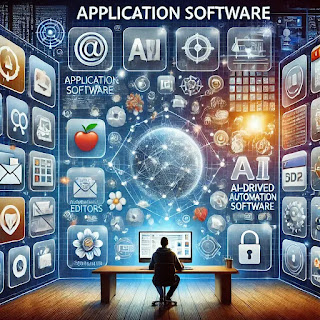Tablets
Tablets have become an essential part of our digital lives, offering the portability of smartphones with the power of a laptop. Whether you’re looking to work on the go, binge-watch your favorite shows, or enhance your creative projects, tablets provide the flexibility to do it all. But with so many options available, how do you choose the right one for you? In this guide, we’ll explore everything you need to know about tablets, including the different types, top features, benefits, and much more!
What is a Tablet?
A tablet is a mobile device that combines the features of a smartphone and a computer. It typically has a larger screen than a smartphone, with an operating system like Android, iOS, or Windows. Tablets are lightweight, portable, and often come with touchscreens, making them easy to use for a wide range of activities.
Types of Tablets
There are several types of tablets, each designed for different needs. Here’s a quick overview of the most common types:
Standard Tablets
- Example: Apple iPad, Samsung Galaxy Tab
- These are the most common tablets for casual use, perfect for browsing the web, watching movies, reading e-books, and social media.
2-in-1 Tablets (Convertible Tablets)
- Example: Microsoft Surface Pro, Lenovo ThinkPad X1
- These tablets come with a detachable keyboard or can be transformed into a laptop, making them ideal for productivity.
Gaming Tablets
- Example: NVIDIA Shield Tablet, Apple iPad Pro (with gaming accessories)
- Built for gamers, these tablets come with powerful processors, high-quality graphics, and gaming controls to offer a great gaming experience.
E-Readers
- Example: Amazon Kindle, Kobo Clara HD
- Though technically a type of tablet, e-readers are specialized for reading e-books and have a paper-like display, making them easy on the eyes.
Children’s Tablets
- Example: Amazon Fire HD Kids Edition
- These tablets are designed specifically for kids, with child-friendly apps, content controls, and durable designs.
Key Features to Consider
When choosing a tablet, you should consider several important features to get the most out of your purchase. These features include:
Screen Size
- Tablets typically range from 7 inches to 12.9 inches. Smaller tablets are portable, while larger ones are better for tasks like watching videos or editing documents.
Operating System
- iOS (Apple iPad): Known for its smooth interface, security, and app selection.
- Android: Offers customization options and is available on a variety of devices.
- Windows: Best for productivity and multitasking with access to full desktop apps.
Performance (Processor, RAM, Storage)
- Tablets come with various performance levels. For basic tasks, a mid-range processor and 3-4GB of RAM are enough. For gaming or intensive tasks, consider a more powerful tablet with 8GB or more RAM and a fast processor.
Battery Life
- Battery life varies across models, with some lasting up to 12 hours of continuous use. Always check the battery rating before purchasing.
Camera Quality
- If you need to take photos or video calls, check for tablets with high-quality cameras. Front-facing cameras are especially important for video calls.
Connectivity (Wi-Fi, 4G/5G, Bluetooth)
- Tablets may offer Wi-Fi only or come with cellular connectivity options like 4G/5G, making them ideal for internet access on the go.
Benefits of Using a Tablet
Tablets provide numerous advantages that make them stand out from other devices like smartphones and laptops:
Portability
- Tablets are lightweight and slim, making them easy to carry around, whether you’re traveling, commuting, or working in different locations.
Versatility
- With touchscreens, stylus support, and a wide range of apps, tablets are versatile devices. They can serve as e-readers, digital notebooks, drawing boards, and even workstations with the right accessories.
Battery Life
- Tablets usually have long battery lives, allowing users to work or play for hours without recharging.
Ease of Use
- The touchscreen interface is intuitive, and the absence of physical keyboards makes them much simpler for casual users.
Cost-Effective
- While premium tablets like the iPad Pro can be expensive, there are many affordable options available that offer great value for basic tasks.
Top Tablets for 2025
Here’s a list of some of the best tablets to consider in 2025:
Apple iPad Pro (2025)
- Perfect for productivity and creativity, with a stunning display, powerful performance, and an extensive app ecosystem.
Samsung Galaxy Tab S9
- Known for its vibrant display and high-end features, ideal for media consumption and gaming.
Microsoft Surface Pro 9
- A 2-in-1 device that works seamlessly as a tablet and laptop, great for professionals and students alike.
Amazon Fire HD 10
- Affordable, with great value for those who want a tablet for streaming and reading.
Lenovo Tab P11 Pro
- A solid option for media lovers and those looking for a mid-range tablet with premium features.
How to Choose the Right Tablet for You
When selecting a tablet, you should ask yourself a few questions:
- What is my primary use? (E.g., gaming, productivity, entertainment)
- Do I need a keyboard or stylus?
- What is my budget?
- Do I need cellular connectivity?
Based on your answers, you can narrow down your choices to find the perfect tablet.



Comments
Post a Comment